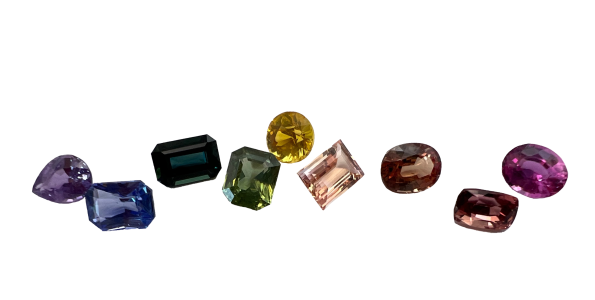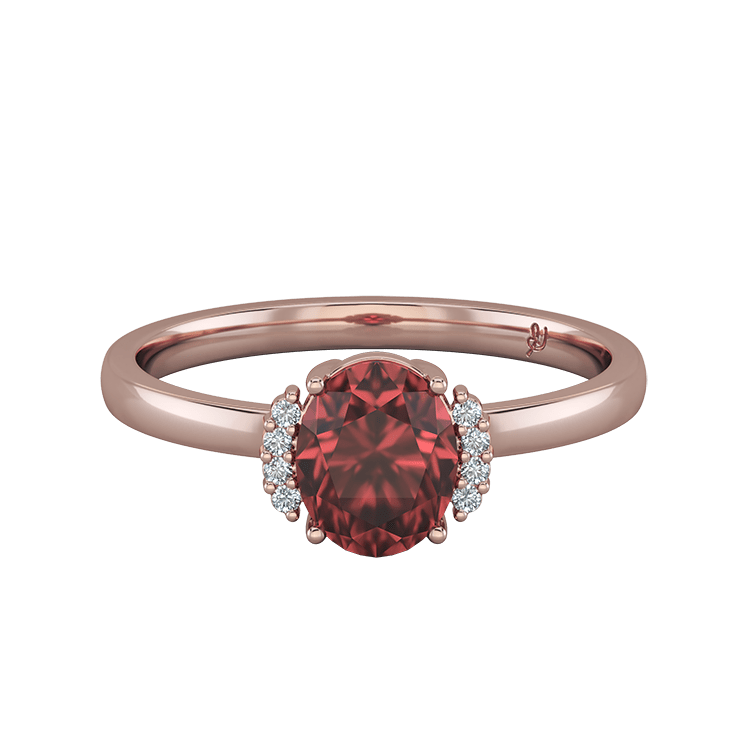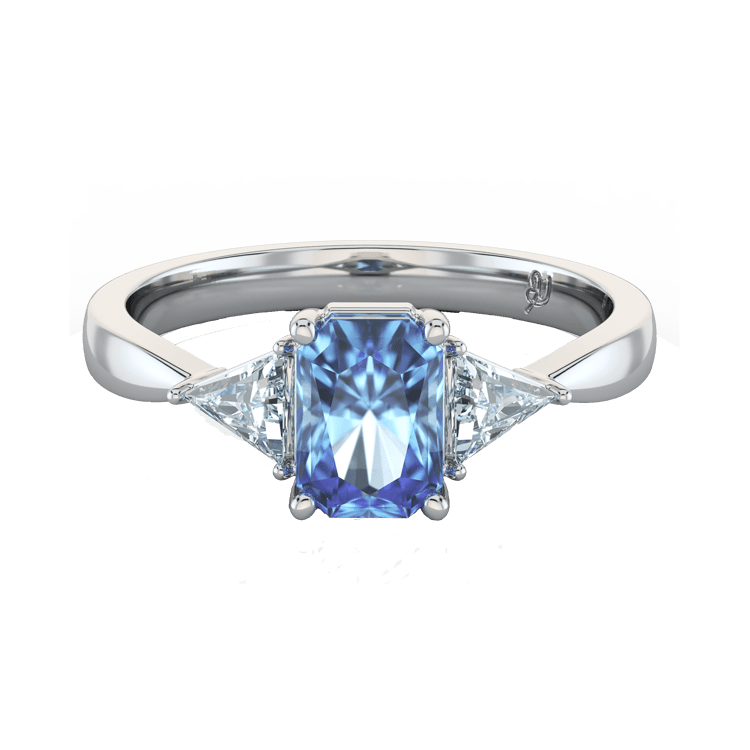Why Sapphires
August 31, 2022 2024-12-30 15:35Why Sapphires
Why Sapphires
Sapphires are a mineral called corundum. Chemically they are hexagonal crystal structures of aluminium oxide and in their purest form will be colourless (“white”), however most have minute amounts of trace elements of other minerals which determines their colour.
Did you know that Corundum (or Sapphire) can be found in every colour of the rainbow? Blue is obviously the ‘known’ colour for Sapphire and all other colours are known as “fancy”, or if red then Ruby.




Trace elements giving sapphire its colour
Gem hardness & durability
Sapphires rate 9 on the MOH scale, which is a scale used to describe the hardness of minerals, essentially rating the scratch resistance compared to other minerals. This scale was developed by Friedrich Mohs back in 1812 and is used widely within the industry. Diamond is top of this scale as the hardest known mineral at the time, with a rating of 10. The steps of this scale are not evenly spaced, there is actually an exponential relationship between them. So Diamond (at 10) is almost 4x harder than Sapphire (at 9) which is 2x harder than Topaz (at 8) etc. Stones with high wearability are rated at 9 and 10. Those that will require extra care and precautions are rated 8, and stones below 8 are not recommended for daily wear.
Sapphires are the hardest coloured gemstone by at least double, and are perfect for everyday wear.
Secondly, sapphires also have no cleavage (internal planes along which a gemstone can split). This means they also have excellent toughness. Practically speaking, this actually means sapphires have greater resistance to chipping or shattering than diamonds, which do have cleavage planes.
So sapphires are tougher than diamonds, but diamonds are harder than sapphires! (Does that make sense?!)
Sapphires are forever
Stability
The other consideration of some stones is that they could be treated in some way that may not be permanent. Meaning, the stone you wear could fade by direct sunlight, or be damaged by mild acids such as lemon juice. Some stones are permeable and will absorb different everyday chemicals such as your skins' oils, moisturisers, sunscreen or soap. For some types of stones this can change their colour permanently making them appear cloudy and dirty, or even a completely different colour! Sapphires are not prone to damage from everyday chemicals.
Corundum (sapphire or ruby) is stable under normal wearing conditions which means it is resistant to the effects of heat, light and common chemicals.
Colours of the rainbow
When most people think of sapphires, the beautiful sparkly royal blue is generally what springs to mind – followed possibly by an image of Princess Diana, now Princess Catherine’s engagement ring. And fair enough, these blue stones are what the jewellery industry has offered the public, shaping our perception of what a sapphire is. Blue is the most common colour for a sapphire, so perhaps it is generally a good representation. And there are so many other coloured stones out there (topaz, morganite, emerald, aquamarine, amethyst…) it would be confusing (even more so!) if all stones came in all colours. They would be harder to differentiate and possibly the less durable minerals would be harder to sell if it was colour you were shopping on.
Well, stop press.
Sapphires DO come in all colours of the rainbow. Red (called Ruby), Orange, Yellow, Green, Blue, Purple, Pink and more. Even black if you look hard enough. So now you can have your cake and eat it too! The hardest, most durable mineral, that is perfect for daily wear, in your favourite colour!

































